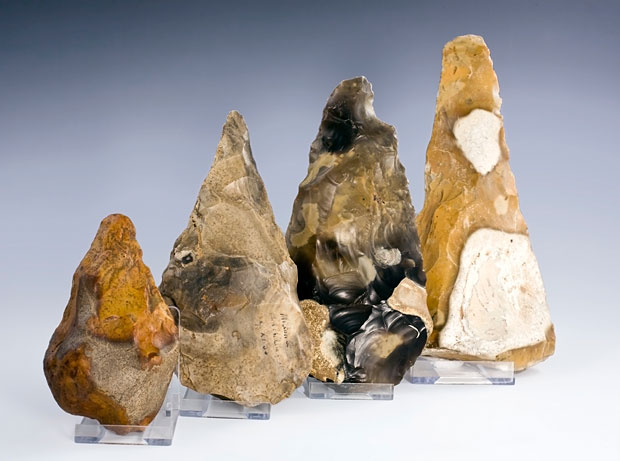When modern humans first evolved around 200,000 years ago, they lived entirely in Africa

WHEN modern humans — Homo Sapiens Sapiens — first evolved around 200,000 years ago, they lived entirely in Africa.
This idea is commonly accepted now, thanks to DNA analysis. But when Charles Darwin, inventor of the theory of evolution, first suggested it in his 1871 book Descent Of Man it was a remarkable insight because so few fossils of ancient humans had been unearthed by then. Much later, discoveries in Africa proved him right.
How and when modern humans spread throughout the world from there is hotly debated but the prevailing theory is this:
Between 80,000BC and 70,000BC a group of Homo Sapiens, perhaps a few hundred, perhaps a few thousand, left the shores of East Africa and crossed the Red Sea into Arabia.
Two other human strands — the Neanderthals and Homo Erectus — were already living in Europe and Asia. Homo Erectus had been there for an enormous period, two million years. But over the next 40,000 years or so they and the Neanderthals were displaced and became extinct as the African newcomers spread north, east and west.
Why Homo Sapiens left Africa can only be guessed at. It may be that, as carnivores, they were roaming further and further afield for prey. It may have been simple curiosity about lands beyond where they lived.
Why they then prevailed over the other species they encountered is not known for certain either. Various theories speculate that they were brighter, more resourceful and had a complexity of language that gave them an advantage.
By 50,000BC these humans exhibited "modern" behaviour: they spoke, they created art and music, they made efficient, finely crafted tools. They are thought to have been more adaptable to different climates, more efficient hunters and gatherers and perhaps better at breeding and raising young.
Nonetheless their spread was slow going, hampered by the arctic conditions of the Ice Age and possibly by hostile Neanderthals, though there is no archaeological evidence of direct confrontation between the two species. (There is recent DNA evidence of some interbreeding, however).
It took some 40,000 years before humans spread throughout what we now call Europe, Asia and Australasia. Aborigines, according to DNA tests carried out in 2011, are probably the direct descendants of the first humans to reach Australia.
DNA tests on two modern human teeth found at Cavallo, Italy, date them to 43,000 to 45,000BC, the earliest such remains in Europe. A jawbone found in Devon dates to only slightly later. The earliest humans in Europe are known as the Cro-Magnon people, after the French cave where the first remains were found in 1868.
Humans crossed into the Americas possibly as early as 30,000BC but more likely by 14,500BC, for which there is solid evidence in the form of fossilised dung.






